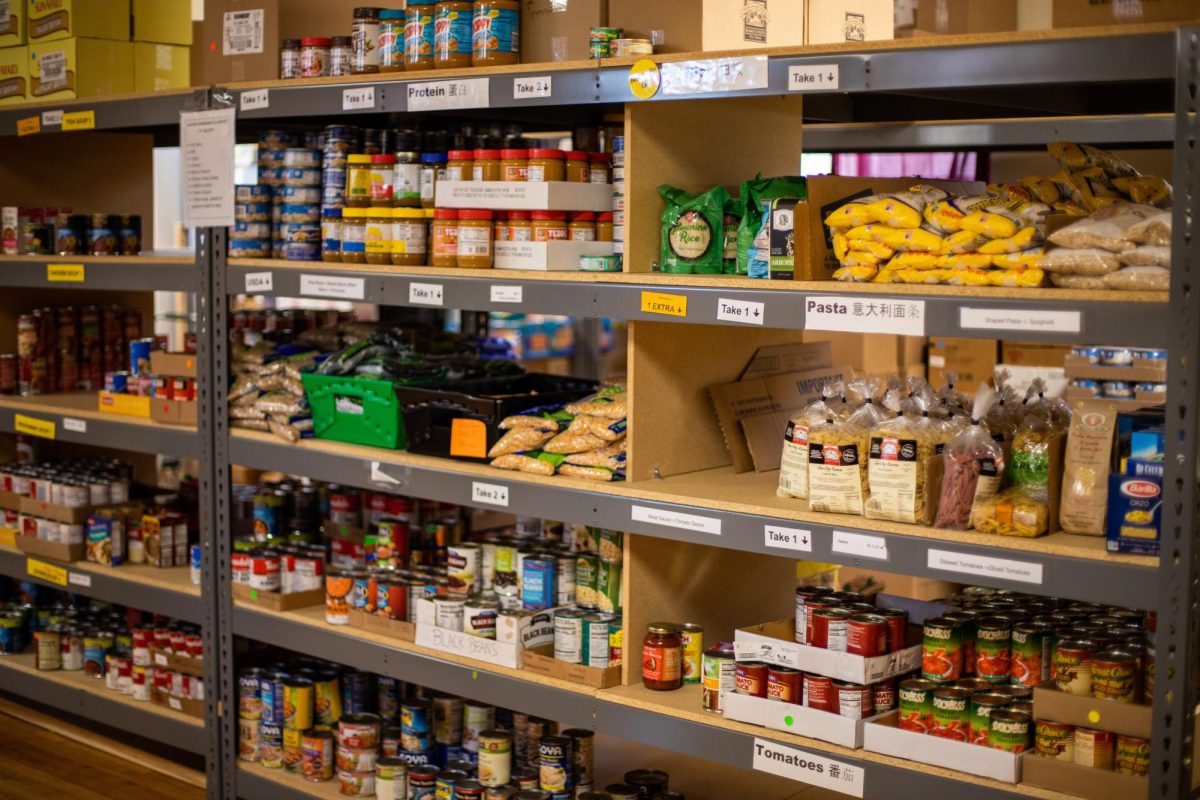
The popularity of energy drinks such as Monster or Red Bull has grown extensively on college campuses and among younger people over the past decade; walk through the library and you will see green Monster M’s peppering the desks and tables, beacons of frantic studiers hammering away at their keyboards long into the night. However, new research is now revealing that these beverages that are high in caffeine, sugar, and other chemicals may be creating dangerous chemical interactions which could pose potential dangers to the average consumer.
Late Monday afternoon students could be seen walking through Southwest with fistfuls of promotional Monster energy drinks, distributed by UMass student and Monster representative Joanna Papanicolaou, who offers samples of Monster at various places around campus including sporting events, concerts, and parties.
Papanicolaou attributed Monster’s success to its convenience. “It is something that is so much more easily accessible for a quick on the go thing to grab out of the fridge, without slowing down a person’s busy schedule by running to the convenience store or other coffee shops,” said Papanicolaou.
Compared with an average cup of coffee, which contains anywhere between 50 and 100 mg of caffeine, popular energy drinks exceed 200 mg and in some cases reach levels as high as 500 mg. In addition, these drinks contain on average 14 teaspoons of sugar, or a quarter of a cup per can. Caffeine, a chemical stimulant which acts on the cardiovascular system to increase heart rate, heart contractility, and blood pressure, may be dangerous when combined with high doses of sugar and other chemicals such as guarana which are found in energy beverages, according to findings published in the Mayo Clinic Proceedings, a review of all available English language research on energy beverages.
While sugar and caffeine each increase blood pressure, it’s yet to be seen whether their effect is additive, said Dr. Sarah Witkowski, an assistant professor of kinesiology who specializes in cardiovascular physiology at the University of Massachusetts. If a person with blood pressure measuring 120/80 consumed an energy drink their blood pressure could increase to prehypertensive levels of 130/90. If a similar increase were to be measured from one year to the next in a patient’s annual checkup, it would demonstrate a need for an immediate change in lifestyle, said Witkowski.
The FDA limits caffeine in cola-like drinks to 0.02 percent or 71 mg per 12-oz serving, according to an article in the Journal of the American Medical Association (JAMA). Energy beverages, which are labeled by the manufacturer as dietary supplements, are not subject to the same regulations covering conventional food products and over the counter drugs. According to the Dietary Supplement Health and Education Act of 1994 the FDA is not responsible for ensuring that a dietary supplement is safe before it is marketed.
Since Red Bull was introduced to the United States in 1997, the country has rapidly become the world’s largest consumer of energy drinks – and with no end in sight, as overall energy drink sales continue to increase at a rate of 35 percent per year, according to the Mayo review. In 2010 Red Bull’s revenue rocketed 15.8 percent to $5.12 billion globally, selling 4.2 billion cans of the popular drink.
This surge in the popularity of energy drinks has been echoed on campus. Sophomore Allison Hope, who sells snacks and refreshments at the Procrastination Station in W.E.B. Dubois Library said students will buy up to four at a time at night or during finals week, staying at the library for days at a time without sleep. Hope said that despite warnings on the back of the can to limit consumption to no more than three a day, nothing can actually be done to control this.
Dr. John P. Higgins, assistant professor of medicine at the University of Texas Health Science Center at Houston and lead author of the Mayo Clinic Proceedings said these drinks are being marketed mainly towards younger people with deliberately deceptive techniques. By placing energy beverages on the same shelves as water and Gatorade, Higgins explains that a great deal of confusion is created, associating energy drinks high in sugar and caffeine with sports drinks containing mostly water and small amounts of salt.
Caffeine, which is included on the World Anti-Doping Agency’s banned substance list, screened for in Olympic athletes, and banned in high doses in many athletic associations, can increase endurance, concentration, and allow individuals to work harder and longer, according to Dr. Barry Braun, an associate professor of kinesiology specializing in endocrinology and metabolism. Braun added that the amount of sugar found in these drinks provides unneeded calories making it more difficult to manage or to lose weight.
Higgins explained that while short term studies have shown that subjects who consume high levels of caffeine can cycle faster, the importance of proper training for an exercise event cannot be emphasized enough. By consuming these beverages additional stress is placed on the cardiovascular system, making the heart work harder and harming your body.
“I used to think it gives me energy but I don’t think so anymore. I would drink them before basketball games in high school,” said Chris Surette, a junior at UMass, as he sipped a Monster beside a computer in the Learning Commons. Asked whether he thought his performance increased, Surette said he thinks it actually worsened his performance. “It made me crash late in the game,” Surette said.
While energy drinks are marketed heavily in association with extreme sports athletes and high intensity activities, many students like Zach Smith are turning to them as a handy study aid, or a cold alternative to hot coffee. Smith, a theater major, said while he’ll take them for certain things he needs to be awake for, he won’t for performances because he knows he’ll crash.
“One of my TA’s from last year was a campus rep for Monster and she came in to class giving them out like candy. Kids were always fired up to have them for sure,” said Sophomore Ryan Ghent, who no longer drinks energy drinks. “I used to drink them pretty frequently (three to four a week) but I began to notice that they didn’t actually do that much for me in comparison to how tired I felt an hour or two after drinking one,” said Ghent.
“They probably aren’t as bad as alarmists say,” said Dr. Braun. “People are pretty immune to caring what nutritionists say about anything. It didn’t work for cigarettes and fast food, it probably won’t work for energy drinks either.”
Brian Canova can be reached at [email protected].













diet program • Jun 13, 2013 at 11:59 pm
I seldom create responses, but i did some searching and
wound up here The Daily Collegian. And I actually do have a few questions for you if you usually do not mind.
Could it be only me or does it seem like some of the comments come across like left by
brain dead individuals? 😛 And, if you are posting at additional online social sites, I’d like to keep up with everything fresh you have to post. Could you list of the complete urls of your community sites like your Facebook page, twitter feed, or linkedin profile?
mari • Feb 16, 2011 at 9:32 pm
i drink red bull mostly everyday and sometimes more then ones a day. Ever seens i drunk them my mood been of. Is the red bull doing that to me? i need help i just cant stop drinking them!
Adam • Feb 16, 2011 at 2:05 pm
Energy Drinks: Deception 101
If these findings aren’t troubling enough here’s another troubling fact. The blatant deception of energy drink company’s in the marketing of their products with athletes. Tune into any major extreme sports event and you’ll see athletes holding what appears to be an energy drink can but in reality they’re filled with water. Monster makes “Tour Water” and makes it available to its athletes. The public thinks athletes are really drinking an energy drink and kids are influenced by these images. If they’re going to deceive the public then the manufacturers need to be help accountable to their messaging as well.